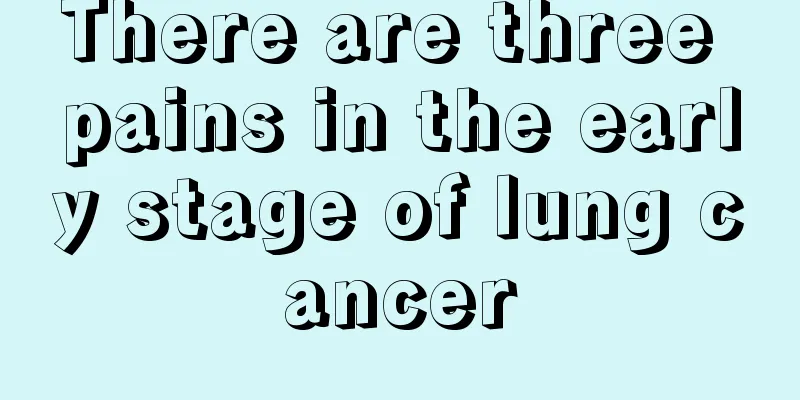What are the symptoms of polio

|
Polio is a relatively common disease that mostly occurs in infants and young children. It is also an infectious disease, mostly caused by viral infection entering the blood circulation, genetics, viral transmission, etc. Common symptoms include limb deformation, limited movement, inward bending of the calves, inability to touch the ground when walking, deformities, etc. This is a particularly painful thing for many parents, but if this disease does not continue to develop after a week, it will recover on its own, so parents should pay special attention. The main symptoms of polio are: 1. Limb muscle atrophy and weakness, limb deformity, difficulty in upper and lower limb movement, joint instability, unequal length of bilateral limbs, etc. 2. Hip joint contracture, flexion, relaxation and instability, or even hip dislocation. Knee flexion deformity and calf bending inward or outward are symptoms of polio sequelae. 3. The symptoms of polio sequelae also manifest in the feet, and various deformities of the feet may occur. For example, the heels or toes cannot touch the ground when walking, or the feet may be inverted and walk on the outside of the instep. 4. In addition, deformities may also occur in other parts of the body, such as deformities of the upper limbs, curvature of the spine, tilt of the pelvis, etc. 5. Failure to receive polio vaccine or unsuccessful vaccination, such as vaccine expiration, taking with hot water, or failure to take all the polio vaccine as prescribed. This is also the basis for the diagnosis of polio. Types of polio There are four types of polio: 1. Asymptomatic It accounts for 90-95% of all infections. No symptoms appear after infection, and the virus reproduces only in the digestive tract, without producing viremia or penetrating the central nervous system. However, the virus can be isolated from the pharynx and feces, and specific neutralizing antibodies can be detected in the body. 2. Lightweight It accounts for about 4-8% and the virus invades non-neural tissues throughout the body. The clinical symptoms lack specificity and may include symptoms of upper respiratory tract inflammation, such as fever of varying degrees, pharyngeal discomfort, pharyngeal congestion and hyperplasia of the posterior pharyngeal wall lymphoid tissue, swollen tonsils, etc.; gastrointestinal symptoms, nausea, vomiting, diarrhea or constipation, abdominal discomfort, etc.; flu-like symptoms, joint and muscle aches, etc. Symptoms last for 1 to 3 days and then recover on their own. 3. Non-paralysis type The polio virus invades the central nervous system, and the circulating nerve fibers spread throughout the body. Symptoms of this stage may appear at the beginning of the disease, but most patients may be asymptomatic or have reduced symptoms for 1 to 6 days after the prodromal period, and then enter this stage. 4. Paralysis It accounts for about 1-2% of the infected people. Its characteristic is that in addition to the clinical manifestations of non-paralysis, there are lesions involving the gray matter of the anterior horn of the spinal cord, the brain and cranial nerves, leading to muscle paralysis. |
<<: What happens when you get old with polio
>>: Lipstick paste sweating phenomenon
Recommend
There are white worms in the shrimp
Green shrimps are a delicious delicacy that many ...
How to check gastric bleeding?
Gastric bleeding is a disease with a relatively l...
Which one tastes better, swimming crab or blue crab
Comb crabs and blue crabs are both very common in...
How much does mid-term chemotherapy for endometrial cancer cost?
Endometrial cancer is one of the most common gyne...
How long does it take to build up a muscle
Every male friend envies others for having strong...
How many centimeters above which stomach cancer is not considered early stage
Whether gastric cancer is in the early stage usua...
How long does coffee last to refresh you
One obvious effect of coffee is that it can refre...
How to quickly relieve toothache caused by internal heat
If the air is dry, or if you eat spicy food for a...
The dangers of running at night
People who like sports should often do one sport,...
What happened when the nails are cut and there is nothing inside?
Although nails are small, they still need our car...
Does vinegar soften bones?
Vinegar is an essential condiment in every househ...
Can cholestasis be cured
Cholestasis has a great impact on people's he...
What is the pathology of testicular cancer
In this era when everyone is afraid of cancer, he...
Use vinegar to wash hair for seborrheic alopecia
In order to treat seborrheic alopecia, many peopl...
What to do if red bumps appear on cheeks due to allergies
Some people are born with allergies. Yes, they wi...









